Female Koi Betta Fish: Care Guide, Varieties, Sorority & Lifespan
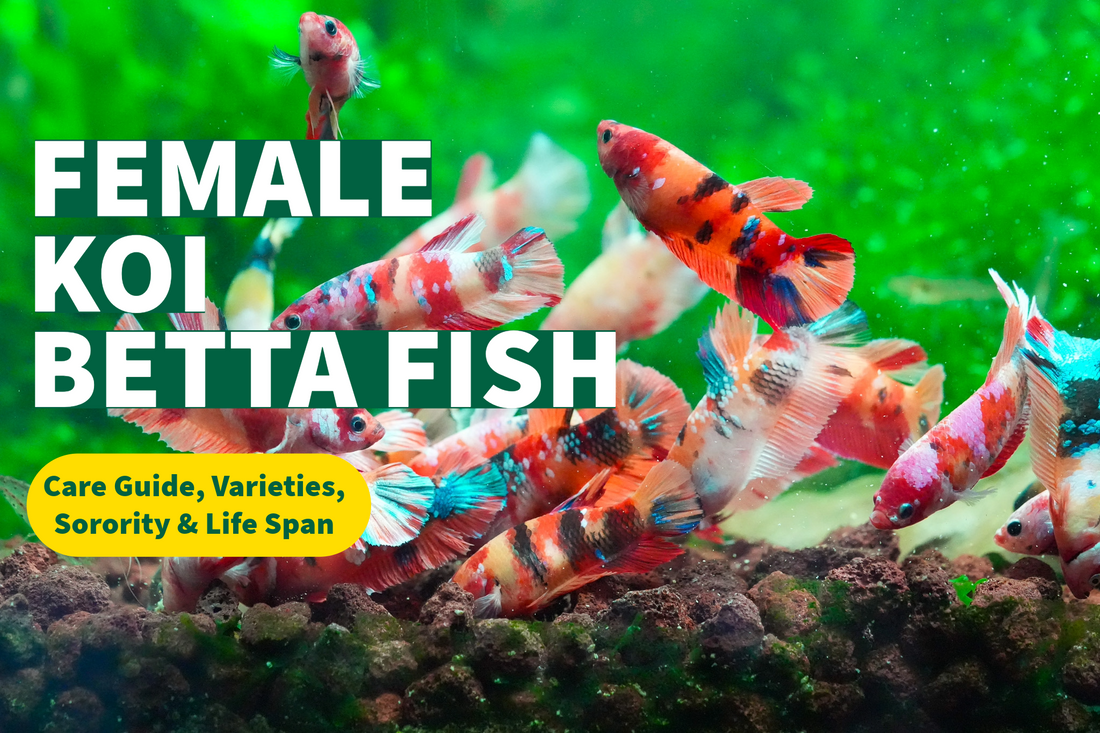
Contents
- 1- Quick Facts about Koi Betta Fish
- 2- Koi Betta Fish Overview
- 3- Appearance & Varieties of Female Koi Betta Fish
- 4- How to Care for Female Koi Betta Fish
- 5- Tips to Create a Female Koi Betta Sorority
- 6- Lifespan of Female Koi Betta Fish
- 7- What to Feed Female Koi Betta Fish
- 8- Where to Buy Female Koi Betta Fish
- 9- FAQs
Quick Facts about Koi Betta Fish
| Feature | Details |
|---|---|
| Scientific Name | Betta splendens |
| Common Names | Koi Betta, Betta Fish |
| Origin | Selective Breeding |
| Aggressiveness | Moderate to High |
| Lifespan | 2-4 years |
| Preferred Water Type | Blackwater, Tannin-rich |
| Diet | Carnivorous |
| Tank Size | Minimum 5 gallons per fish |
| Special Care | Provide hiding spots, maintain water quality |
Koi Betta Fish Overview

Origin: Koi Betta fish are a result of selective breeding, primarily developed to exhibit vibrant colors and unique patterns reminiscent of Koi carp. This selective breeding process has given rise to a variety of stunning Koi Betta fish.
Aggressiveness: Like many Betta fish, Koi Betta can be aggressive, especially males. However, females tend to be slightly less aggressive, making them a better choice for community tanks.
Naming: The term "Koi" is derived from the Koi carp, a popular ornamental fish known for its bright and diverse coloration, which Koi Bettas mimic.
Appearance & Varieties of Female Koi Betta Fish

Appearance: Differences Between Male and Female Koi Betta Fish
Female Koi Betta fish are generally smaller and less colorful than their male counterparts. They have shorter fins and a more subdued coloration, which can intensify during breeding periods. Males, on the other hand, are known for their long, flowing fins and more vibrant colors.
Varieties
Koi Red Galaxy

The Koi Red Galaxy Betta is characterized by its deep red hues mixed with splashes of other colors, resembling a galaxy. These fish often have metallic scales that shimmer under the right lighting.
Koi Nemo Galaxy

Koi Nemo Galaxy Bettas are known for their vivid orange and black patterns, interspersed with blue or green spots, creating a striking contrast that stands out in any aquarium.
Koi Yellow Galaxy

Featuring bright yellow scales mixed with various other colors, the Koi Yellow Galaxy Betta is a radiant addition to any tank. Their scales often have a metallic sheen that enhances their vibrant appearance.
Koi Nemo Classic

The Koi Nemo Classic variety combines the traditional orange and black Koi pattern with the Betta's distinctive metallic scales, creating a timeless and eye-catching fish.
How to Care for Female Koi Betta Fish

Caring for female Koi Betta fish requires attention to detail, particularly regarding their habitat, tank conditions, and overall setup to ensure a healthy and vibrant life.
Habitat, Tank Condition & Setup
Creating the perfect habitat for your female Koi Betta fish involves setting up a tank that mimics their natural environment as closely as possible.
Tank Size
A spacious tank is crucial for the well-being of your female Koi Betta fish. A minimum of 5 gallons per fish is recommended. For a sorority of female Bettas, a 20-gallon tank or larger is ideal. This provides ample space for each fish to establish its territory, reducing the likelihood of aggression.
Water Temperature
Maintaining the correct water temperature is essential for your Bettas' health. Female Koi Betta fish thrive in water temperatures between 76-82°F (24-28°C). Use a reliable aquarium heater to keep the temperature stable, as fluctuations can cause stress and health issues.
pH Level and Water Hardness
The ideal pH level for female Koi Betta fish is between 6.5 and 7.5. Water hardness should be kept at a moderate level. Regularly test the water to ensure these parameters remain consistent, and make adjustments as needed using pH stabilizers or water conditioners.
Filtration
A gentle filtration system is crucial for maintaining water quality without creating strong currents that can stress your fish. A sponge filter or a filter with an adjustable flow rate is ideal. Regularly clean and maintain the filter to prevent build-up of harmful toxins.
Substrate
Choose a soft substrate to prevent damage to the delicate fins of your female Koi Betta fish. Sand or fine gravel works well. Avoid sharp or rough substrates that could cause injuries.
Decor and Hiding Spots
Providing plenty of hiding spots and decor in the tank is essential for reducing stress and allowing your Bettas to establish their own territories. Use a variety of decorations such as caves, driftwood, and especially live or silk plants. Live plants like Java fern, Anubias, and floating plants like Amazon frogbit or water lettuce offer excellent cover and contribute to a natural environment.
Lighting
Moderate lighting is recommended for female Koi Betta fish. Avoid intense, bright lighting which can stress the fish. LED lights with adjustable settings are ideal, allowing you to create a gentle day-night cycle.
Water Changes
Regular water changes are vital for maintaining a healthy environment. Change 20-25% of the water weekly to keep ammonia, nitrite, and nitrate levels in check. Use a water conditioner to treat tap water before adding it to the tank to remove chlorine and other harmful chemicals.
Tannin-Rich Water

Creating tannin-rich water, also known as blackwater, can benefit your female Koi Betta fish by reducing stress and mimicking their natural habitat. Adding Indian almond leaves or driftwood can release tannins into the water, providing a soothing and health-boosting environment.
Tips to Create a Female Koi Betta Sorority
Creating a successful female Koi Betta sorority requires careful planning and attention to detail to ensure the health and harmony of your fish.
Sisterhood: Born and Raised Together

When forming a sorority, it's best to choose female Bettas that have been born and raised together. This familiarity can reduce aggression and help establish a peaceful hierarchy within the tank.
Tannin Water
Female Betta fish thrive in tannin-rich water, which mimics their natural habitat. Tannins can help reduce stress, prevent diseases, and enhance the coloration and scale development of your fish.
Provide Hiding Spots with Real Aquatic Plants
Creating a natural environment with plenty of hiding spots is crucial. Use real aquatic plants and floating plants to provide cover and reduce stress among the fish. This setup not only makes the tank more attractive but also gives the Bettas places to retreat and establish territories.
Lifespan of Female Koi Betta Fish

Female Koi Betta fish typically live for 2-4 years, depending on their care and environment. Factors such as water quality, diet, and tank setup play a significant role in their longevity. Regular maintenance and attention to their specific needs can help ensure a long, healthy life.
What to Feed Female Koi Betta Fish
For optimal health, female Koi Betta fish should be fed a diet of high-quality Betta pellets supplemented with live or frozen bloodworms and brine shrimp. These protein-rich foods are ideal for maintaining their vibrant coloration and energy levels. Feed them small portions 1-2 times a day, ensuring they can consume the food within 2-3 minutes to avoid overfeeding and water quality issues.
Where to Buy Female Koi Betta Fish
For those looking to purchase female Koi Betta fish, Tropicflow store offers a wide variety of these beautiful fish. More than just individual fish, Tropicflow provides packs of Koi female Betta sororities, making it easier to start your own peaceful and colorful tank setup. Tropicflow is known for its healthy, vibrant fish and excellent customer service, ensuring you get the best quality for your aquarium.
FAQs
What is the ideal tank size for a female Koi Betta sorority?
A minimum of 20 gallons is recommended for a female Betta sorority to provide enough space for the fish to establish territories and reduce aggression.
Can female Koi Betta fish live with other fish?
Yes, female Koi Betta fish can live with other peaceful fish species, provided the tank is large enough and there are plenty of hiding spots.
How often should I feed my female Koi Betta fish?
Feed your female Koi Betta fish small amounts of high-quality Betta food 1-2 times a day. Avoid overfeeding to prevent water quality issues.
What water parameters are ideal for female Koi Betta fish?
Maintain a water temperature between 76-82°F, with a pH level of 6.5-7.5. Regular water changes and monitoring are essential to keep the water parameters stable.
Do female Koi Betta fish need a filter?
Yes, a filter is necessary to maintain clean water and reduce the build-up of harmful toxins. Choose a filter with a gentle flow to avoid stressing the fish.
Can I keep male and female Koi Betta fish together?
It's generally not recommended to keep male and female Betta fish together outside of breeding situations, as males can be very aggressive towards females.
No comments

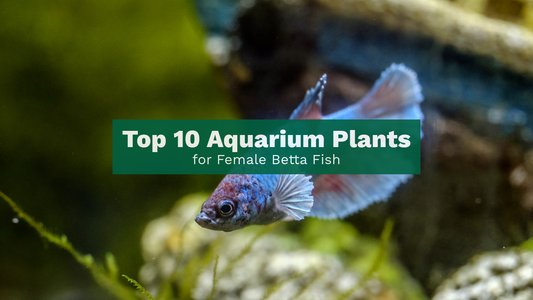
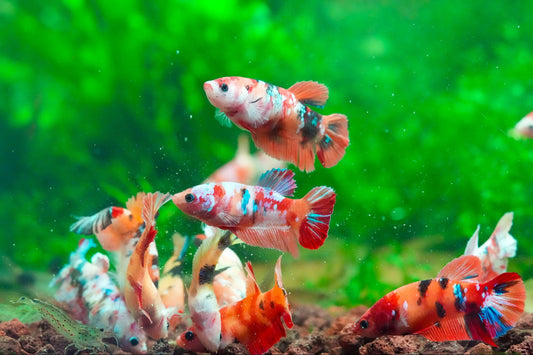
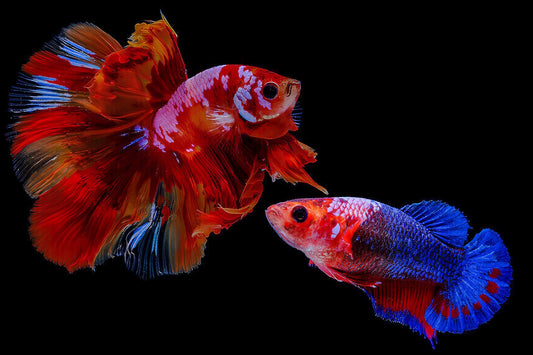
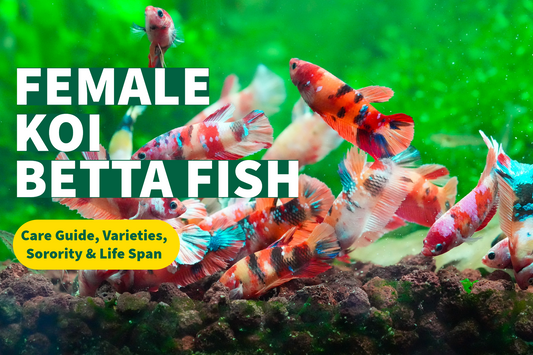

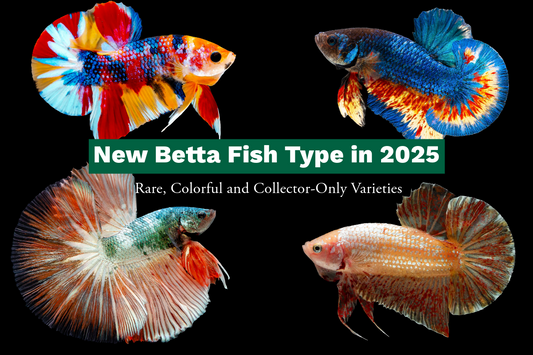
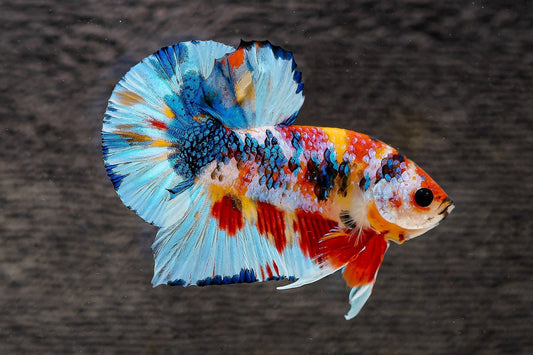
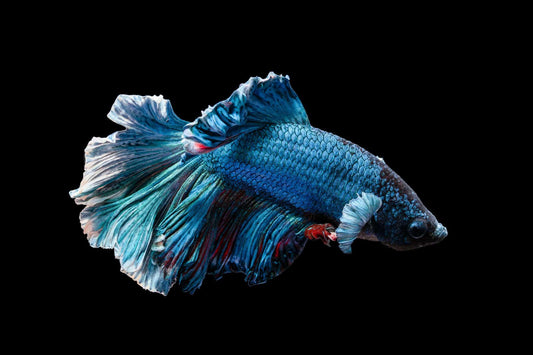
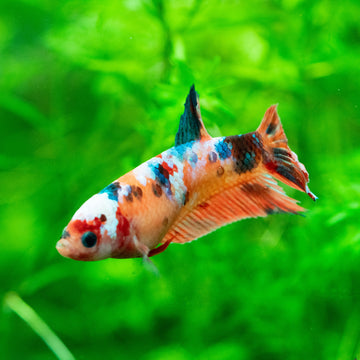
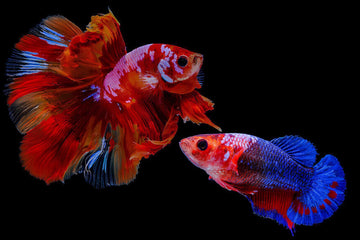
0 comments